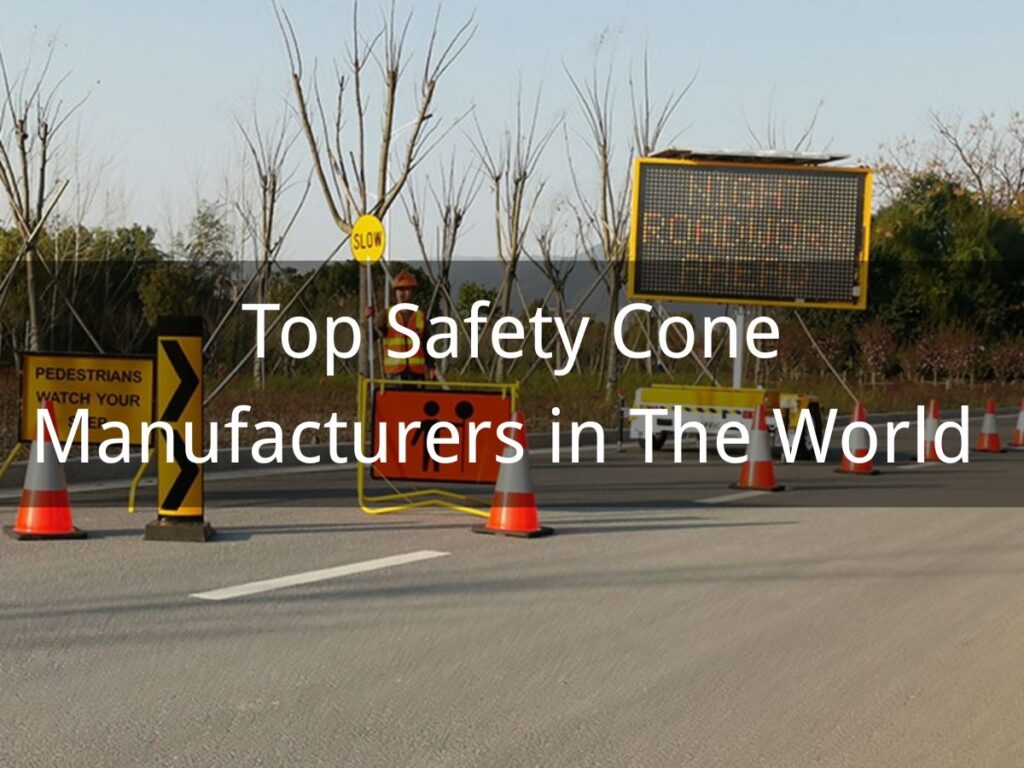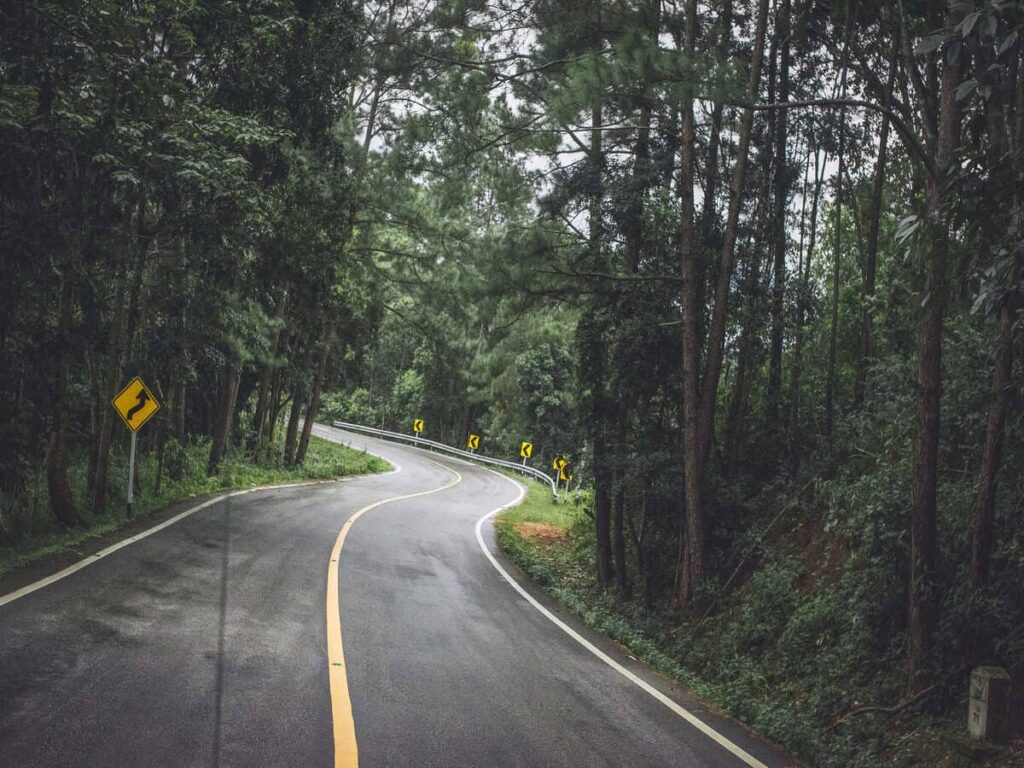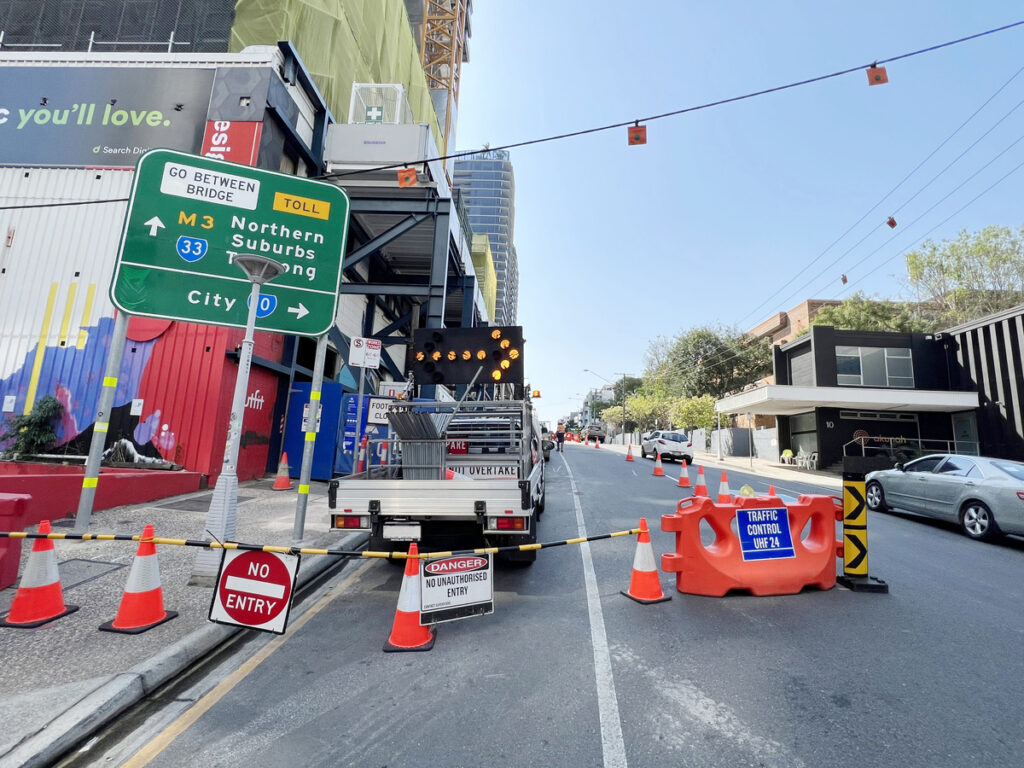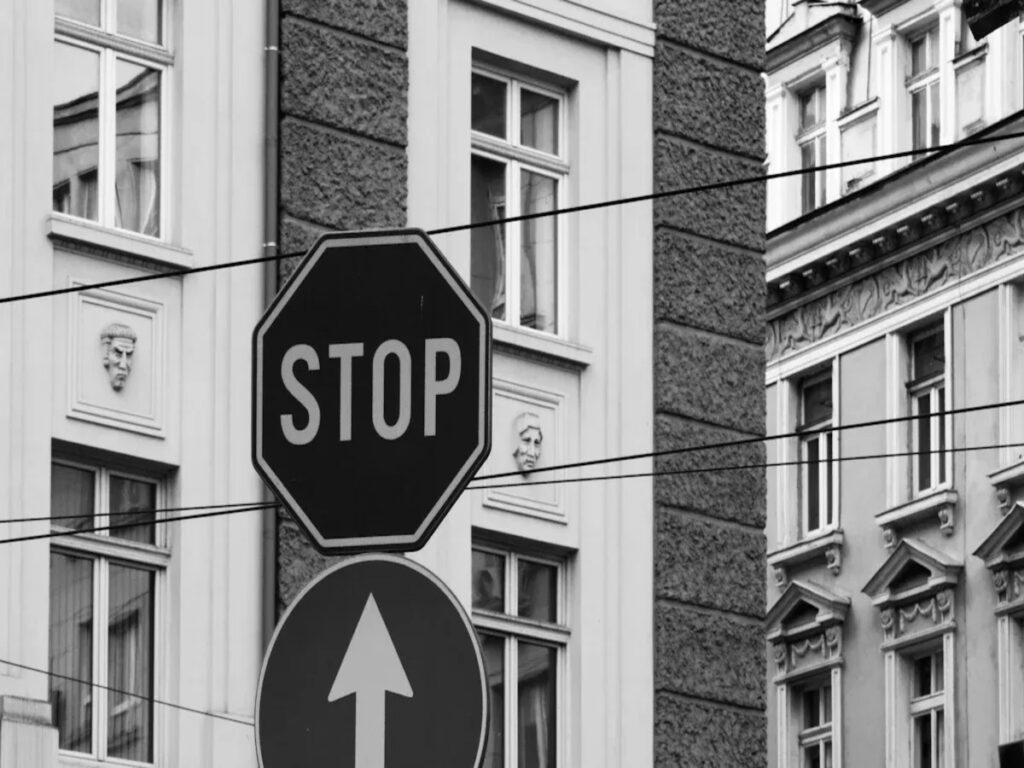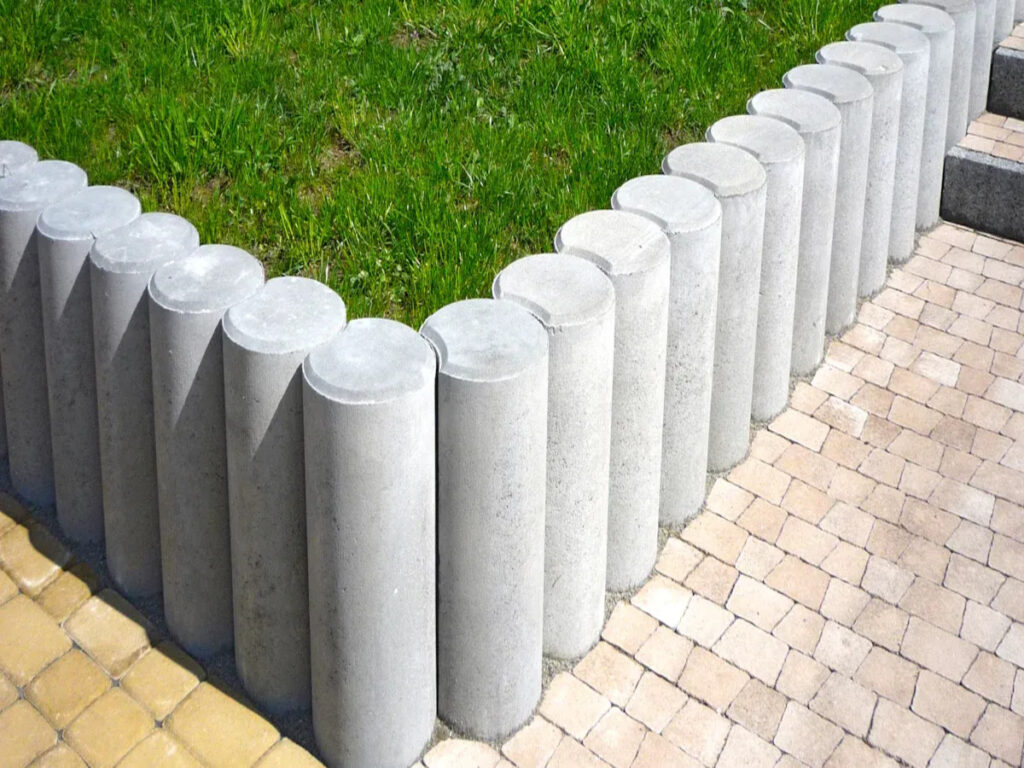
मध्य पूर्व के लिए सुरक्षा बोलार्ड चुनना मुश्किल है. क्षेत्र में बहुत गर्म मौसम है, सैंडस्टॉर्म, और तेज धूप. इन स्थितियों को कठिन सामग्रियों की आवश्यकता होती है जो रह सकती हैं. स्टेनलेस स्टील जैसे विकल्प, कोटेड कार्बन स्टील, और यूवी-सुरक्षित कंपोजिट अच्छी तरह से काम करते हैं. शहरों या कारखानों में सेफ्टी बोलार्ड्स को मजबूत रहना चाहिए और अच्छा दिखना चाहिए. सही सामग्री लेने से उन्हें थोड़ी देखभाल के साथ लंबे समय तक रहने में मदद मिलती है.
OPTRAFFIC का पूरे मध्य पूर्व में एक मजबूत और बढ़ता ग्राहक आधार है, उपलब्ध कराने के सुरक्षा बोलार्ड जो क्षेत्र की मांग वाली पर्यावरणीय स्थितियों को पूरा करता है. उच्च तापमान प्रतिरोध से लेकर संक्षारण सुरक्षा तक, शहरी विकास और औद्योगिक क्षेत्रों दोनों में ग्राहकों द्वारा हमारे बोलार्ड पर उनके स्थायित्व के लिए भरोसा किया जाता है, कम रखरखाव, और विश्वसनीय प्रदर्शन.
चाबी छीनना
- 316L स्टेनलेस स्टील या लेपित स्टील जैसी मजबूत सामग्री का उपयोग करें. ये गर्मी और रेतीले तूफ़ानों में लंबे समय तक टिके रहते हैं.
- फीका पड़ने या टूटने से रोकने के लिए यूवी सुरक्षा वाले बोलार्ड चुनें. इससे वे अच्छे दिखते हैं और लंबे समय तक टिके रहते हैं.
- उड़ती रेत से होने वाले नुकसान से बचने के लिए खरोंच प्रतिरोधी सतह चुनें. रेत नरम सामग्री को जल्दी बर्बाद कर सकती है.
- समय और पैसा बचाने के लिए देखभाल में आसान विकल्पों को अपनाएं. यह कम मरम्मत सेवाओं वाले दूर-दराज के स्थानों में सहायक है.
- यूवी-सुरक्षित पॉलीयुरेथेन से बने लचीले बोलार्ड व्यस्त क्षेत्रों में अच्छा काम करते हैं. प्रहार करने पर ये झुक जाते हैं और वापस अपने आकार में आ जाते हैं.
मध्य पूर्व में बोलार्ड के लिए पर्यावरणीय चुनौतियाँ
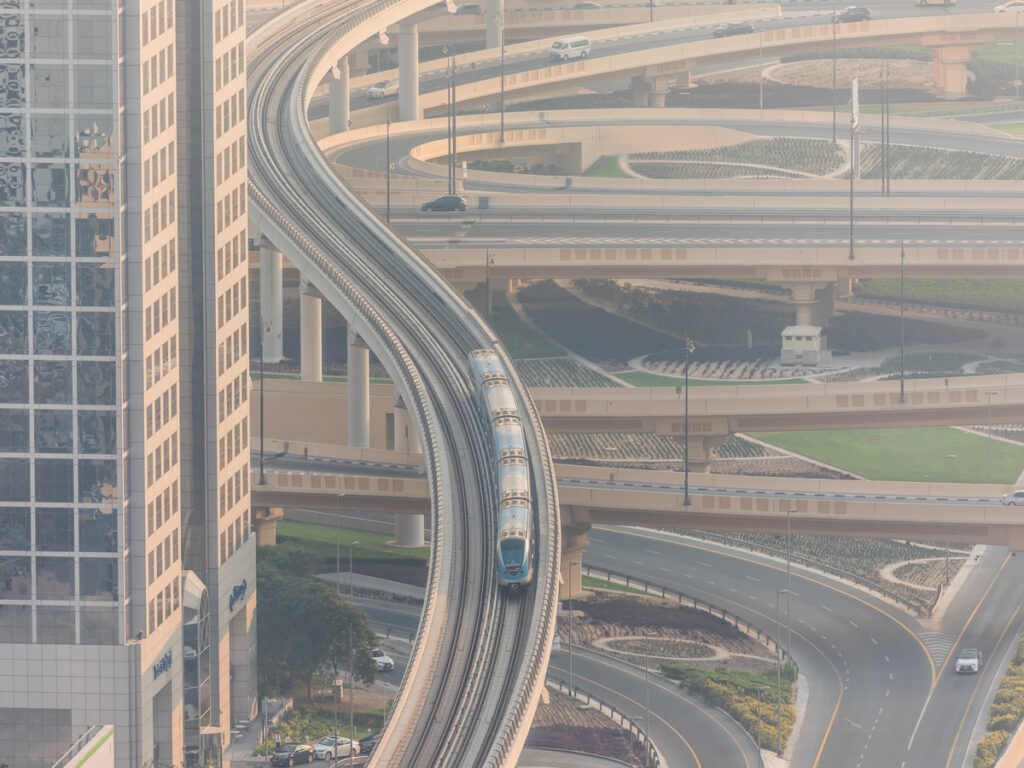
अत्यधिक गर्मी और थर्मल विस्तार
मध्य पूर्व पृथ्वी पर सबसे गर्म स्थानों में से एक है. टीतापमान अक्सर 50°C से ऊपर चला जाता है (122° F) दिन के दौरान. यह ऊष्मा सामग्रियों को बार-बार फैलने और सिकुड़ने का कारण बनती है. अधिक समय तक, यह आंदोलन बोलार्ड को नुकसान पहुंचा सकता है. उन सामग्रियों में दरारें या झुकाव दिखाई दे सकते हैं जो गर्मी को सहन नहीं कर सकते. कुछ धातुएं कमजोर हो सकती हैं, और प्लास्टिक पिघल सकता है या आकार बदल सकता है. गर्मी प्रतिरोधी सामग्री का उपयोग उच्च तापमान में बोलार्ड को मजबूत रखता है.
यूवी एक्सपोजर और सामग्री का क्षरण
The मध्य पूर्व में तेज़ धूप एक और समस्या है. सूर्य से निकलने वाली यूवी किरणें सामग्रियों को तेजी से पुराना बनाती हैं. पेंट्स फीके पड़ सकते हैं, प्लास्टिक फट सकता है, और धातुएँ अपनी कोटिंग खो सकती हैं. यूवी सुरक्षा के बिना बोलार्ड जल्दी खराब हो जाते हैं और उन्हें ठीक करने में अधिक लागत आती है. यूवी-संरक्षित सामग्री, विशेष कंपोजिट या उपचारित धातुओं की तरह, अब पिछले. वे वर्षों तक धूप में रहने के बाद भी मजबूत रहते हैं और अच्छे दिखते हैं.
रेत का घर्षण और सतह का कटाव
रेगिस्तानी इलाकों में अक्सर रेतीले तूफ़ान आते रहते हैं. रेत के छोटे-छोटे कण सैंडपेपर की तरह काम करते हैं, बोलार्ड सतहों को खरोंचना. इससे सुरक्षात्मक परतें हट सकती हैं, नीचे की सामग्री को खुला छोड़ना. नरम सामग्री, जैसे अनुपचारित धातुएँ या कंक्रीट, घिस भी सकता है. सख्त कोटिंग या खरोंच-प्रतिरोधी सतहों वाले बोलार्ड बेहतर काम करते हैं. ये विशेषताएं उन्हें रेतीले तूफ़ान से बचने और कठोर परिस्थितियों में उपयोगी बने रहने में मदद करती हैं.
सीमित रखरखाव संसाधन
यातायात का ख्याल रखना बोलार्ड मध्य पूर्व में कठिन है. इस क्षेत्र में पानी कम है, उच्च श्रम लागत, और मरम्मत के लिए कुछ उपकरण. इसका मतलब यह है कि ऐसी सामग्री चुनना बहुत महत्वपूर्ण है जिसे कम रखरखाव की आवश्यकता होती है.
रेगिस्तानों में पानी मिलना कठिन है. सफाई सुरक्षा बोलार्ड पानी की कमी होने पर अक्सर मुश्किल होती है. रेत और धूल तेजी से ढेर हो जाते हैं, सतहों को गंदा करना. चिकनी फिनिश या स्वयं-सफाई कोटिंग वाली सामग्री धोने की जरूरतों को कम करने में मदद कर सकती है.
मजदूर ढूंढना भी एक समस्या है. फिक्सिंग के लिए कुशल श्रमिक बोलार्ड किराये पर लेना आसान नहीं हो सकता. आपको ऐसी सामग्रियों की आवश्यकता है जो बार-बार मरम्मत के बिना कठोर मौसम में भी जीवित रहें. यूवी-स्थिर सामग्री टूटने और लुप्त होने का विरोध करती है, इसलिए दोबारा रंगने या बदलने की कम आवश्यकता होती है.
दूरस्थ क्षेत्रों में उन्नत उपकरणों का अभाव है. कुछ बोलार्ड फिक्सिंग या कोटिंग के लिए विशेष उपकरण की आवश्यकता होती है. स्टेनलेस स्टील या पाउडर-लेपित कार्बन स्टील जैसी टिकाऊ सामग्री बुनियादी देखभाल के साथ अच्छी तरह से काम करती है.
बख्शीश: चुनना बोलार्ड जंग-रोधी फ़िनिश और खरोंच-प्रतिरोधी सतहों के साथ. ये सुविधाएँ उन्हें लंबे समय तक चलने देती हैं और समय और पैसा बचाती हैं.
मजबूत सामग्री चुनने से रखरखाव लागत और प्रयास कम हो जाते हैं. टिकाऊ सुरक्षा बोलार्ड मध्य पूर्व में बेहतर काम करें और कम संसाधनों का उपयोग करें.
टिकाऊ बोलार्ड के लिए आवश्यक गुण
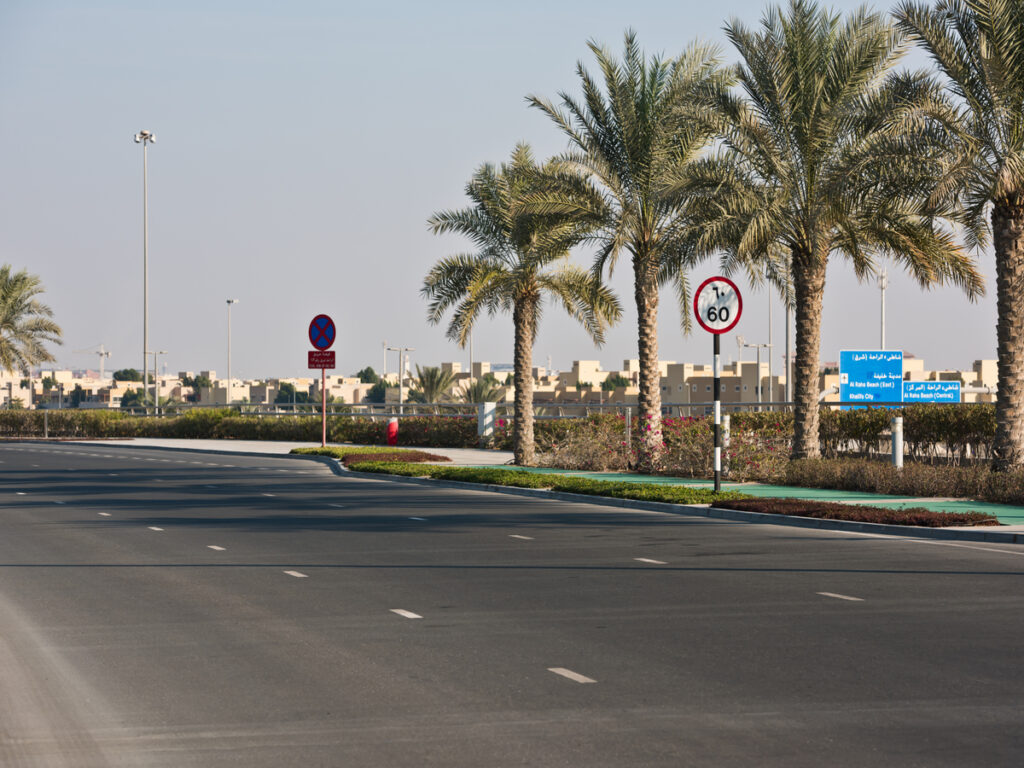
गर्मी प्रतिरोध और थर्मल स्थिरता
मध्य पूर्व में बहुत गर्म मौसम रहता है. यह गर्मी कमजोर सामग्रियों को नुकसान पहुंचा सकती है. बोलार्ड को बिना झुके या टूटे उच्च तापमान को संभालना चाहिए. स्टेनलेस स्टील या पाउडर-लेपित कार्बन स्टील जैसी मजबूत सामग्री अच्छी तरह से काम करती है. वे मजबूत रहते हैं और अत्यधिक गर्मी में भी अपना आकार बनाए रखते हैं.
दैनिक तापमान परिवर्तन भी समस्याएँ पैदा करता है. पदार्थ गर्मी में फैलते हैं और ठंडे होने पर सिकुड़ते हैं. अधिक समय तक, इससे वे टूट सकते हैं या कमज़ोर हो सकते हैं. स्थिर सामग्रियों से बने बोलार्ड इस क्षति का प्रतिरोध करते हैं. सही सामग्री चुनने का मतलब है कम मरम्मत और लंबे समय तक उपयोग.
दीर्घकालिक प्रदर्शन के लिए यूवी स्थिरता
रेगिस्तान में सूरज बहुत तेज़ होता है. यूवी किरणें सामग्री को फीका कर सकती हैं, दरार, या तेजी से खराब हो जाते हैं. सूरज की रोशनी में बोलार्ड को विशेष यूवी-संरक्षित कोटिंग्स की आवश्यकता होती है. ये कोटिंग्स सतह को सुरक्षित रखती हैं और लंबे समय तक टिकती हैं.
उदाहरण के लिए, लचीले बोलार्ड के लिए यूवी-स्थिर पॉलीयुरेथेन एक बढ़िया विकल्प है. यह फीका नहीं पड़ता और वर्षों तक अच्छा दिखता रहता है. एंटी-ग्लेयर फ़िनिश वाला स्टेनलेस स्टील भी अच्छा काम करता है. यह सूर्य के प्रकाश को परावर्तित करता है और अपनी सुरक्षात्मक परत बनाए रखता है. यूवी संरक्षण बोलार्ड को मजबूत रहने और अच्छे दिखने में मदद करता है, मरम्मत पर पैसे की बचत.
रेतीले तूफ़ानों के ख़िलाफ़ घर्षण प्रतिरोध
रेतीले तूफ़ान रेगिस्तानों में आम हैं. रेत के छोटे-छोटे कण सतहों को खरोंच सकते हैं और घिस सकते हैं. अनुपचारित धातु या कंक्रीट जैसी नरम सामग्री आसानी से क्षतिग्रस्त हो जाती है. बोलार्ड को इस प्रकार के क्षरण का विरोध करने की आवश्यकता है.
सख्त कोटिंग वाली सामग्री, पाउडर-लेपित कार्बन स्टील की तरह, रेत से होने वाले नुकसान से बचाएं. ये लेप कवच की तरह काम करते हैं, खरोंच और घिसाव को रोकना. स्टेनलेस स्टील भी एक अच्छा विकल्प है क्योंकि यह कटाव को रोकता है और चिकना रहता है. घर्षण प्रतिरोधी सामग्री चुनने से बोलार्ड को रेतीले तूफ़ान से बचने और सुरक्षा और यातायात नियंत्रण के लिए उपयोगी बने रहने में मदद मिलती है.
बख्शीश: कठिन रेगिस्तानी परिस्थितियों के लिए बनाए गए बोलार्ड की तलाश करें. उच्च-प्रभाव प्रतिरोध और स्थायित्व वाले वाले चुनें.
सुरक्षा बोलार्ड के लिए प्रभाव प्रतिरोध
प्रभाव प्रतिरोध के लिए बहुत महत्वपूर्ण है बोलार्ड व्यस्त क्षेत्रों में. उन्हें बिना टूटे या झुके दुर्घटनाओं को संभालना होगा. यह उन्हें सुरक्षा और यातायात नियंत्रण के लिए उपयोगी रखता है.
स्टेनलेस स्टील और पाउडर-लेपित कार्बन स्टील जैसी मजबूत सामग्री अच्छी तरह से काम करती है. ये सामग्रियां बिना टूटे या आकार बदले बिना प्रभाव झेलती हैं. स्टेनलेस स्टील उन शहरों के लिए बहुत सख्त और बढ़िया है जहां अक्सर दुर्घटनाएं होती हैं.
लचीला बोलार्ड यूवी-स्थिर पॉलीयुरेथेन से बने उत्पाद भी एक अच्छा विकल्प हैं. ये प्रहार करने पर मुड़ जाते हैं और वापस अपने आकार में आ जाते हैं. वे पार्किंग स्थल या अस्थायी यातायात क्षेत्र के लिए आदर्श हैं. उनका लचीलापन दोनों की रक्षा करता है bollard और वाहन.
प्रभाव प्रतिरोधी बोलार्ड लोगों और संपत्ति को सुरक्षित रखने में मदद करें. व्यस्त सड़कों पर, वे कारों को प्रतिबंधित क्षेत्रों में प्रवेश करने से रोकते हैं. कारखानों में, वे श्रमिकों और मशीनों को दुर्घटनाओं से बचाते हैं.
इस बारे में सोचें कि आपके स्थान को कितने प्रभाव प्रतिरोध की आवश्यकता है. उच्च प्रभाव वाले स्थान, राजमार्गों की तरह, मजबूत सामग्री की जरूरत है. शांत क्षेत्रों के लिए, लचीला बोलार्ड पर्याप्त हो सकता है. सही सामग्री चुनने से वे लंबे समय तक चलते हैं और कम मरम्मत की आवश्यकता होती है.
बख्शीश: चुनना बोलार्ड मजबूत प्रभावों के लिए बनाया गया. वे सुरक्षा में सुधार करते हैं और समय के साथ पैसे बचाते हैं.
रेगिस्तानी परिस्थितियों के लिए बोलार्ड सामग्रियों की तुलना करना
कार्बन स्टील: मजबूत लेकिन देखभाल की जरूरत है
कार्बन स्टील मजबूत और किफायती है, इसे एक सामान्य विकल्प बनाना. यह भारी प्रभावों को अच्छी तरह से संभाल लेता है, इसलिए यह व्यस्त क्षेत्रों के लिए बहुत अच्छा है. लेकिन इसे टिकाऊ बनाए रखने के लिए उचित देखभाल की आवश्यकता होती है. बिना कोटिंग्स के, इसमें जंग लग सकता है, विशेषकर समुद्र के पास या आर्द्र रेगिस्तान में.
पाउडर कोटिंग जंग को रोकने और रेत से होने वाले नुकसान से बचाने में मदद करती है. ये कोटिंग्स एक ढाल की तरह काम करती हैं लेकिन प्रभावी बने रहने के लिए जाँच की आवश्यकता होती है. अगर आप कुछ मजबूत और बजट के अनुकूल चाहते हैं, कार्बन स्टील का काम करता है. बस याद रखना, इसे नियमित रखरखाव की आवश्यकता है.
बख्शीश: रेगिस्तानों में लंबे समय तक टिकने के लिए यूवी-सुरक्षित कोटिंग वाले कार्बन स्टील बोलार्ड चुनें.
स्टेनलेस स्टील: जंग-मुक्त और लंबे समय तक चलने वाला
स्टेनलेस स्टील आसानी से जंग नहीं लगता, इसलिए यह कठिन जलवायु के लिए बहुत अच्छा है. 316L स्टेनलेस स्टील जैसे प्रकारों में क्रोमियम और मोलिब्डेनम अधिक होता है. ये तत्व इसे जंग प्रतिरोधी बनाते हैं और बेहतर पहनते हैं. यह इसे शहरों और नमकीन तटीय क्षेत्रों के लिए एकदम सही बनाता है.
यहां बताया गया है कि विभिन्न स्टील ग्रेड की तुलना कैसे की जाती है:
| इस्पात श्रेणी | क्रोमियम सामग्री (%) | मोलिब्डेनम सामग्री (%) | मोटाई में कमी (मिमी) |
|---|---|---|---|
| डीएस2507 | 25.0 | 3.8 | SS301 से कम |
| एसएस301 | 17.2 | 0.1 | DS2205 से अधिक |
| डीएस2205 | 22.0 | 3.0 | एन/ए |
स्टेनलेस स्टील सूरज की रोशनी में भी अच्छी तरह टिका रहता है. एंटी-ग्लेयर फ़िनिश इसे ठंडा रखती है और क्षति से बचाती है. जबकि इसकी कीमत पहले से ज्यादा होती है, यह लंबे समय तक चलता है और कम देखभाल की आवश्यकता होती है. अधिक समय तक, यह एक स्मार्ट निवेश है.
ठोस: गर्मी को संभालता है लेकिन ख़राब हो जाता है
कंक्रीट ट्रैफिक बोलार्ड बिना झुके गर्मी से निपटने में अच्छे हैं. वे ठोस और मजबूत हैं, इसलिए वे सुरक्षित क्षेत्रों में अच्छा काम करते हैं.
लेकिन कंक्रीट में भी समस्याएँ हैं. रेत इसे घिस सकती है, और सूरज की रोशनी दरारें पैदा कर सकती है. यह समय के साथ इसे कमजोर बनाता है. इसे मजबूत बनाये रखने के लिए, आपको इसे बार-बार सील करने और जांचने की आवश्यकता होगी.
यदि आपके क्षेत्र में अधिक रेतीले तूफ़ान या तेज़ धूप नहीं है, कंक्रीट काम कर सकता है. कठिन स्थानों के लिए, कुछ ऐसा चुनें जो घिसाव को बेहतर ढंग से रोकता हो.
टिप्पणी: दरारों और क्षति से बचने के लिए कंक्रीट बोलार्ड को सीलिंग और जांच की आवश्यकता होती है.
पोलीयूरीथेन: लचीला और UV प्रतिरोधी
पॉलीयुरेथेन एक बेहतरीन सामग्री है बोलार्ड रेगिस्तानों में. प्रहार करने पर यह मुड़ जाता है लेकिन वापस अपने आकार में आ जाता है. यह इसे बहुत सारी कारों या अस्थायी सेटअप वाले स्थानों के लिए एकदम सही बनाता है. कठोर सामग्रियों के विपरीत, यह आसानी से नहीं टूटता और दोनों की सुरक्षा करता है bollard और वाहन.
पॉलीयुरेथेन सूरज की रोशनी को भी बहुत अच्छी तरह से संभालता है. परीक्षणों से पता चलता है कि लंबे समय तक यूवी एक्सपोज़र के बाद भी यह मजबूत रहता है. थर्माप्लास्टिक पॉलीयुरेथेन (तप्सू), एक प्रकार का पॉलीयुरेथेन, कड़ी धूप में बमुश्किल बदलता है. लगभग तीन वर्षों के परीक्षण के बाद, यह केवल हार गया 5% इसकी प्रकाश स्पष्टता की. इससे साबित होता है कि यह बिना टूटे तेज धूप में भी जीवित रह सकता है.
इन बोलार्ड थोड़ी देखभाल की जरूरत है. उनका यूवी-सुरक्षित डिज़ाइन फीका पड़ने और टूटने से रोकता है, इसलिए वे लंबे समय तक चले. पार्किंग स्थल के लिए, रास्तों, या दुर्घटना-संभावित क्षेत्र, पॉलीयुरेथेन एक स्मार्ट और किफायती विकल्प है.
बख्शीश: यूवी-संरक्षित पॉलीयुरेथेन का उपयोग करें बोलार्ड भारी यातायात वाले धूप वाले स्थानों में.
पुनर्चक्रित प्लास्टिक: हरा लेकिन गर्मी के प्रति संवेदनशील
पुनर्निर्मित प्लास्टिक के लिए एक पर्यावरण-अनुकूल विकल्प हैं बोलार्ड. वे कचरे का पुन: उपयोग करते हैं, कचरे में कटौती करके ग्रह की मदद करना. कई लोगों के पास सूरज की रोशनी में फीका पड़ने और टूटने से बचाने के लिए यूवी सुरक्षा होती है. वे हल्के भी हैं, उन्हें स्थानांतरित करने और सेट करने में आसान है.
लेकिन ये प्लास्टिक गर्मी को अच्छी तरह से संभाल नहीं पाते हैं. 50°C से अधिक तापमान में (122° F), वे नरम या मुड़ सकते हैं. इससे वे बहुत गर्म या व्यस्त क्षेत्रों में कम उपयोगी हो जाते हैं. वे छायादार स्थानों या कम कारों वाले स्थानों पर बेहतर काम करते हैं.
अगर आपको पर्यावरण और जरूरत की परवाह है बोलार्ड हल्की स्थितियों के लिए, पुनर्चक्रित प्लास्टिक एक अच्छा विकल्प है. रेगिस्तानों के लिए, बेहतर स्थायित्व के लिए उन्हें स्टील जैसी मजबूत सामग्री के साथ मिलाएं.
अल्युमीनियम: हल्का और जंग रहित
अल्युमीनियम हल्का है और जंग नहीं लगता, इसे रेगिस्तानों या तटीय क्षेत्रों के लिए बढ़िया बनाना. स्टील के विपरीत, यह नमकीन हवा या नमी में खराब नहीं होगा. इसका मतलब यह है कि यह लंबे समय तक चलता है और इसे कम रखरखाव की आवश्यकता होती है.
इसका हल्का वजन इसे स्थापित करना और स्थानांतरित करना आसान बनाता है. एल्युमीनियम को संभालने के लिए आपको बड़ी मशीनों की आवश्यकता नहीं है बोलार्ड, समय और पैसा बचत. भले ही यह हल्का हो, यह कई उपयोगों के लिए पर्याप्त मजबूत है, जैसे पैदल मार्ग या सजावटी बाधाएँ.
तथापि, एल्युमीनियम स्टील या पॉलीयुरेथेन जितना सख्त नहीं है. जोर से मारने पर यह टूट सकता है या मुड़ सकता है, इसलिए यह उच्च प्रभाव वाले क्षेत्रों के लिए आदर्श नहीं है. अधिक मजबूती के लिए, अतिरिक्त स्थायित्व के लिए स्टील कोर के साथ एल्यूमीनियम का उपयोग करें.
टिप्पणी: अल्युमीनियम बोलार्ड सबसे अच्छे हैं जहां जंग प्रतिरोध और आसान हैंडलिंग सबसे ज्यादा मायने रखती है.
मध्य पूर्व में उपयोग के लिए अनुशंसित बोलार्ड सामग्री
316एल स्टेनलेस स्टील: मजबूत और धूप प्रतिरोधी
316एल स्टेनलेस स्टील कठिन रेगिस्तानी परिस्थितियों के लिए बहुत अच्छा है. इसमें क्रोमियम और मोलिब्डेनम की मात्रा अधिक होती है, जो जंग और संक्षारण को रोकते हैं. इससे यह लंबे समय तक चलता है और अच्छा दिखता है, नमकीन तटीय क्षेत्रों में भी.
यह तेज़ धूप को भी अच्छे से संभाल लेता है. एंटी-ग्लेयर फ़िनिश इसे ठंडा रखती है और सतह की रक्षा करती है. यह इसे शहर की सड़कों और औद्योगिक क्षेत्रों के लिए बिल्कुल उपयुक्त बनाता है. जबकि शुरुआत में इसकी कीमत अधिक होती है, इससे बाद में पैसे की बचत होती है. आप मरम्मत और प्रतिस्थापन पर कम खर्च करेंगे, यह इसे मध्य पूर्व बोलार्ड के लिए एक स्मार्ट विकल्प बनाता है.
पाउडर-लेपित कार्बन स्टील: किफायती और टिकाऊ
पाउडर-लेपित कार्बन स्टील मजबूत और बजट के अनुकूल है. यह सड़कों या कारखानों जैसे व्यस्त क्षेत्रों में अच्छा काम करता है. पाउडर कोटिंग इसे जंग से बचाती है, स्क्रैच, और लुप्त होती.
- खरीदने की सामर्थ्य: इसकी शुरूआती लागत कम होती है और देखभाल की भी कम जरूरत होती है.
- मज़बूत: कोटिंग रेत और सूरज की रोशनी को नुकसान पहुंचाने से रोकती है.
- weatherproof: यह नमी को बाहर रखता है, इसलिए इसमें आसानी से जंग नहीं लगेगा.
This material is a good pick if you need tough bollards that don’t cost too much.
UV-Stabilized Polyurethane: Best for Flexible Bollards
UV-stabilized polyurethane is perfect for flexible bollards. It bends when hit and goes back to its shape. This protects both the bollard and vehicles. Its UV resistance stops fading and cracking, तेज धूप में भी.
| विशेषता | विवरण |
|---|---|
| सामग्री | UV-stabilized polyurethane |
| ऊंचाई | 750मिमी |
| व्यास | 75मिमी |
| Impact Rating | 20 tons at 100km/h |
| FLEXIBILITY | Returns to upright position |
| Tested Impacts | ऊपर 1,000 प्रभाव डालता है |
These bollards are tough and need little care. They’re great for parking lots, रास्तों, और व्यस्त क्षेत्र. They can handle over 1,000 एचआईटीएस, making them reliable for safety in harsh places.
बख्शीश: Use UV-stabilized polyurethane bollards in busy spots. They last long and need less upkeep.
Hybrid/Composite Bollards: Strong and Built for Tough Weather
Hybrid बोलार्ड use different materials to make them very strong. उनके पास अक्सर एक स्टील कोर होता है जो एक मिश्रित आवरण से ढका होता है. यह मिश्रण उन्हें ताकत देता है और मौसम से होने वाले नुकसान से बचाता है. वे खराब मौसम वाली जगहों पर अच्छा काम करते हैं, भारी यातायात, या बार-बार क्रैश होना.
मिश्रित आवरण स्टील कोर को जंग से सुरक्षित रखता है, यूवी किरणें, और खरोंच. यह टूटता या फीका नहीं पड़ता, तेज धूप में भी. रेत के तूफ़ान आसानी से सतह को नुकसान नहीं पहुँचा सकते क्योंकि यह खरोंचों का प्रतिरोध करता है. प्रभावों के दौरान स्टील कोर मजबूत रहता है, इन्हें बना रहे हैं बोलार्ड सुरक्षा क्षेत्रों के लिए बढ़िया.
परीक्षणों से पता चलता है कि मिश्रित सामग्री बहुत टिकाऊ होती है. उदाहरण के लिए, के साथ ठोस 0.5% सिंथेटिक फाइबर नियमित कंक्रीट से अधिक मजबूत होता है. नियमित कंक्रीट की तन्य शक्ति होती है 3.48 एन/मिमी², जबकि फाइबर-प्रबलित कंक्रीट बेहतर है. फ्लेक्सुरल परीक्षण भी यह दर्शाते हैं फाइबर-प्रबलित कंक्रीट नियंत्रण नमूने से अधिक मजबूत है, जो केवल था 2.77 एन/मिमी². ये नतीजे साबित करते हैं कि हाइब्रिड डिज़ाइन बनाते हैं बोलार्ड अधिक कठोर और लंबे समय तक चलने वाला.
Hybrid बोलार्ड कम देखभाल की जरूरत है. उनका मौसमरोधी डिज़ाइन जंग और कटाव को रोकता है, समय और पैसा बचत. रेगिस्तान में भी, उन्हें बार-बार मरम्मत या प्रतिस्थापन की आवश्यकता नहीं होती है.
बख्शीश: संकर चुनें बोलार्ड कठोर मौसम या उच्च प्रभाव वाले जोखिम वाले स्थानों के लिए. वे लंबे समय तक मजबूत और सुरक्षित रहते हैं.
लंबे समय तक चलने वाले बोलार्ड के लिए रखरखाव युक्तियाँ
संक्षारणरोधी कोटिंग्स और यूवी-प्रतिरोधी फिनिश
सुरक्षात्मक परतें बोलार्ड को कठिन जलवायु में लंबे समय तक टिकने में मदद करती हैं. जंग रोधी कोटिंग्स स्टील बोलार्ड को टिकाऊ बना सकती हैं 15 वर्ष अधिक. ये कोटिंग्स पानी और जंग को रोकती हैं, मरम्मत पर पैसे की बचत. धूप वाले क्षेत्रों में, यूवी-प्रतिरोधी फिनिश बहुत महत्वपूर्ण हैं. वे लुप्त होना बंद कर देते हैं, खुर, और जंग, बोलार्ड को मजबूत और दृश्यमान रखना.
बाहरी उपयोग के लिए बनी उच्च गुणवत्ता वाली कोटिंग चुनें. ये न केवल सुरक्षा करते हैं बल्कि बोलार्ड को बेहतर भी बनाते हैं. यह शहरों और फ़ैक्टरियों के लिए बहुत अच्छा है. खरोंच या छिलने के लिए कोटिंग्स की अक्सर जांच करें. क्षतिग्रस्त स्थानों पर पानी या धूप आ सकती है, के कारण नुकसान.
बख्शीश: बोलार्ड को मजबूत बनाए रखने के लिए हर कुछ वर्षों में नई सुरक्षात्मक कोटिंग्स जोड़ें.
घिसाव और यूवी थकान के लिए नियमित निरीक्षण
बोलार्ड की जांच करने से अक्सर दरारें या फीका पड़ने जैसी समस्याओं का जल्दी पता लगाने में मदद मिलती है. इन्हें तुरंत ठीक करने से बड़ी क्षति रुक जाती है और बोलार्ड काम करते रहते हैं. विशेषज्ञ पर्यावरण के आधार पर जांच करने का सुझाव देते हैं:
| स्थिति | निरीक्षण अंतराल |
|---|---|
| सामान्य सेवा | प्रत्येक 90 दिन |
| उच्च-भार संचालन | प्रत्येक 30 दिन |
| संक्षारक वातावरण | प्रत्येक 15 दिन |
| शॉक लोडिंग के बाद | तत्काल निरीक्षण |
गंदगी और जमी हुई गंदगी को हटाने के लिए सुरक्षा बोलार्ड को हल्के साबुन से साफ करें. यह घिसाव को खराब होने से रोकता है. मौसमी देखभाल भी महत्वपूर्ण है. गर्मी के मौसम में, यूवी संरक्षण पर ध्यान दें. सर्दी में, जंग रोकने के लिए नमक साफ करें.
तथ्य: नियमित जांच रुक सकती है 78% बड़ी असफलताओं का, पैसे और समय की बचत.
रेत से सुरक्षा के लिए घर्षण-प्रतिरोधी सतहें
रेतीले तूफ़ान सुरक्षा बोलार्ड को खरोंच और ख़राब कर सकते हैं, विशेष रूप से नरम वाले. घर्षण प्रतिरोधी कोटिंग्स रेत से होने वाले नुकसान से बचाती हैं. पाउडर-लेपित कार्बन स्टील और स्टेनलेस स्टील इसके लिए मजबूत विकल्प हैं.
रेत के संचय को हटाने के लिए बोलार्ड को अक्सर साफ करें. यह खरोंच को रोकता है और कोटिंग को बरकरार रखता है. रेतीले इलाकों में, चिकनी या स्व-सफाई सतहों वाले बोलार्ड का उपयोग करें. इन्हें कम देखभाल की आवश्यकता होती है और ये लंबे समय तक अच्छी स्थिति में रहते हैं.
बख्शीश: रेतीले रेगिस्तानों में बोलार्ड की सुरक्षा के लिए घर्षण प्रतिरोधी सामग्री का उपयोग करें.
समय और पैसा बचाने के लिए कम रखरखाव वाली सामग्री
ऐसी सामग्री चुनने से, जिसे कम देखभाल की आवश्यकता होती है, पैसे बचाए जा सकते हैं. मध्य पूर्व जैसे कठिन स्थानों में, टिकाऊ सामग्री प्रमुख हैं. वे बार-बार मरम्मत या प्रतिस्थापन के बिना लंबे समय तक चलते हैं. यह उन्हें दीर्घकालिक उपयोग के लिए एक स्मार्ट विकल्प बनाता है.
कम देखभाल वाले बोलार्ड के लिए स्टेनलेस स्टील एक शीर्ष विकल्प है. इसमें जंग या संक्षारण नहीं होता है, यहां तक कि गर्मी या रेत में भी. आपको इसे बार-बार साफ़ करने या लेप लगाने की ज़रूरत नहीं होगी. बेहतर परिणाम के लिए, use 316L stainless steel. It works well in deserts and near the sea.
Powder-coated carbon steel is another good pick. The coating protects it from sunlight, रेत, और पानी. This means less repainting or rust fixing is needed. It’s great for busy cities or factories.
UV-stabilized polyurethane bollards are perfect for high-traffic areas. They bend when hit but return to shape without breaking. Their UV protection keeps them strong and looking nice under the sun.
Hybrid bollards mix steel and composite materials. The steel core makes them strong, while the outer layer stops rust and UV damage. This combo reduces care needs and helps them last longer.
Choosing durable, low-maintenance materials lowers costs and keeps bollards working well in harsh conditions.
Picking the best material मध्य पूर्व में सुरक्षा के लिए बोलार्ड उन्हें लंबे समय तक चलने में मदद करता है और पैसे बचाता है. 316L स्टेनलेस स्टील जैसी मजबूत सामग्री, पाउडर-लेपित कार्बन स्टील, और यूवी-संरक्षित कंपोजिट गर्म मौसम में अच्छा काम करते हैं, सैंडस्टॉर्म, और तेज़ धूप. ये सामग्रियां जल्दी खराब नहीं होतीं, थोड़ी देखभाल की जरूरत है, और वर्षों तक सुरक्षित रहें. कठिन परिस्थितियों के लिए बनाए गए बोलार्ड को चुनने से मरम्मत की लागत कम हो जाती है और वे लंबे समय तक चलते हैं. अब अच्छे निर्णयों का मतलब बाद में बेहतर परिणाम होगा.
अक्सर पूछे जाने वाले प्रश्न
रेगिस्तानी जलवायु में बोलार्ड के लिए सबसे अच्छी सामग्री क्या है??
316एल स्टेनलेस स्टील सबसे अच्छा विकल्प है. यह जंग नहीं है, गर्मी को संभालता है, और सूरज की रोशनी में मजबूत रहता है. पाउडर-लेपित कार्बन स्टील और यूवी-संरक्षित पॉलीयूरेथेन भी रेगिस्तान में स्थायी उपयोग के लिए बहुत अच्छे हैं.
बोलार्ड पैदल यात्रियों की सुरक्षा में कैसे सुधार करते हैं??
बोलार्ड कारों को पैदल मार्गों से दूर रखते हैं. वे वाहनों को लोगों के क्षेत्रों में प्रवेश करने से रोकते हैं, दुर्घटनाओं को कम करना. लचीले बोलार्ड व्यस्त स्थानों में अच्छा काम करते हैं क्योंकि वे बिना टूटे मुड़ते हैं.
क्या बोलार्ड रेतीले तूफ़ान का सामना कर सकते हैं??
हाँ, पाउडर-लेपित कार्बन स्टील और स्टेनलेस स्टील जैसी कठोर सामग्री अच्छी तरह से काम करती है. वे उड़ती रेत से खरोंच और क्षति का प्रतिरोध करते हैं, रेगिस्तानों में मजबूत रहना.
क्या दूरदराज के क्षेत्रों के लिए कम रखरखाव वाले सुरक्षा बोलार्ड उपलब्ध हैं??
हाँ, स्टेनलेस स्टील और यूवी-संरक्षित कंपोजिट को कम देखभाल की आवश्यकता होती है. ये सामग्री जंग का विरोध करते हैं, धूप, और खरोंच, उन्हें कम मरम्मत उपकरणों वाले स्थानों के लिए अच्छा बनाना.
बोलार्ड सुरक्षा परिधि संरक्षण में कैसे योगदान करते हैं??
बोलार्ड वाहनों को प्रतिबंधित क्षेत्रों में प्रवेश करने से रोकते हैं. वे सरकारी इमारतों या फ़ैक्टरियों जैसी जगहों की सुरक्षा करते हैं. मजबूत बोलार्ड तेजी से चलने वाली कारों को रोकते हैं और सुरक्षा में सुधार करते हैं.



